Maloja is situated at 1803 metres above sea level at the head of the Upper Engadine valley in the Swiss Canton of Graubűnden. It is sited at the summit of the Maloja Pass which leads down to the Italian border at Castesegna and has a population of about 300 inhabitants. The name Maloja means “alder grove” and derives from the name of the alpine variety of the alder known as “Malör” or “Maro”. The village was first mentioned with this name in 1244. It is known as Maloggia in Italian and Malögia in Romansch. Near the village is the source of the River Inn which then flows into Lake Sils and ultimately into the River Danube. Above Maloja is the “Watershed of Europe” with the River Inn eventually flowing in to the Black Sea, also the River Julia flowing into the Rhine and ultimately the North Sea and the River Mairia which flows into the River Po and finally in to the Mediterranean Sea.
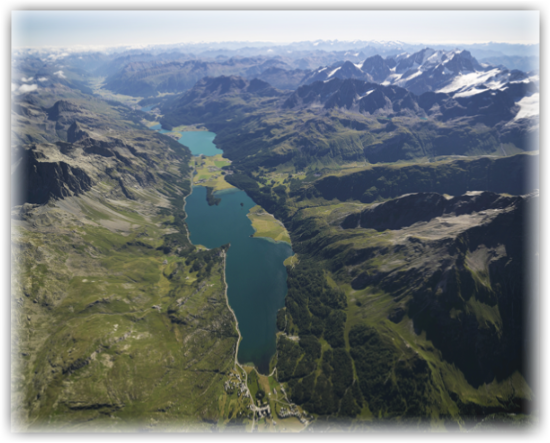
Aerial photo of the village of Maloja (1803 m) with view of the Lakes Sils, Silvaplana, Champfèr and St. Moritz towards the Lower Engadine. On the right-hand-side is the snow-covered Piz Bernina (4049 m) along with the Bernina massif.
Maloja was on the route which the Roman Legions took when marching from Lake Como towards St. Moritz and they built fortifications at Maloja to secure the route over the Maloja Pass, the remains of which can still be seen. In more recent times the artist Giovanni Segantini lived and worked in Maloja, until his death in 1899.
Maloja is renowned as the most snow sure resort in the whole of Switzerland and each March is the starting point for the Engadine Ski Marathon. This attracts about 13,000 cross-country skiers each year for the 42Km course which ends at S-chanf. In summer it is a hikers paradise with many interesting walks.
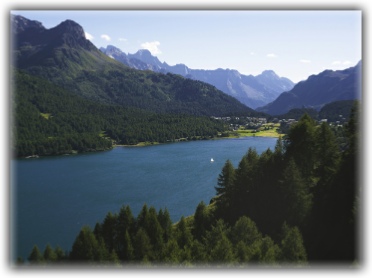
Steel-blue summer day with view of Lake Sils and the larch-lined shore. In the background is the village of Maloja.
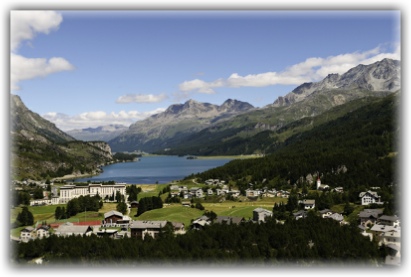
View of the village of Maloja looking towards the Upper Engadine. The impressiive former first class Hotel Maloja Palace is on the left-hand-side with Lake Sils in the background.
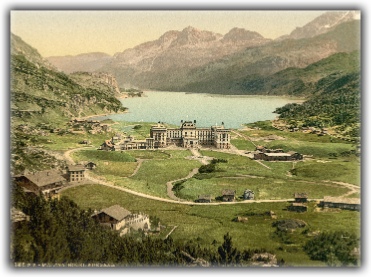
The village of Maloja in 1902. The Maloja Palace Hotel was built in 1884 for the Belgium Count Camille de Renesse.
All the above modern photographs were taken by Robert Boesch and are copyright: swiss-image.ch/Robert Boesch.
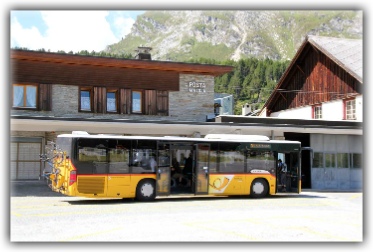
Maloja Post Office and one of the Post Buses that go down the pass to Chiavenna.
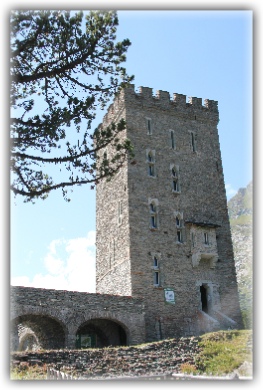
The tower overlooking the pass was built over along period being finished in 1903. It is the symbol of the village and is now used as a viewing tower and for exhibitions.
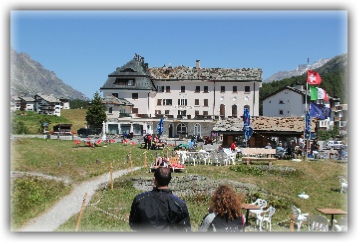
Maloja Kulm Hotel which is situated at the summit of the pass. When we visited in 2014 the hotel was derelict and still was in 2016.
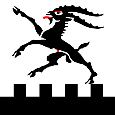
Flag of the Bergell District of which Maloja is a part of.
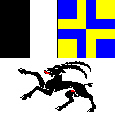
Cantonal Flag of Graübunden
Page updated 13th August 2018

